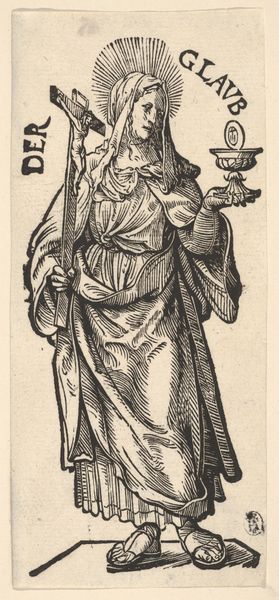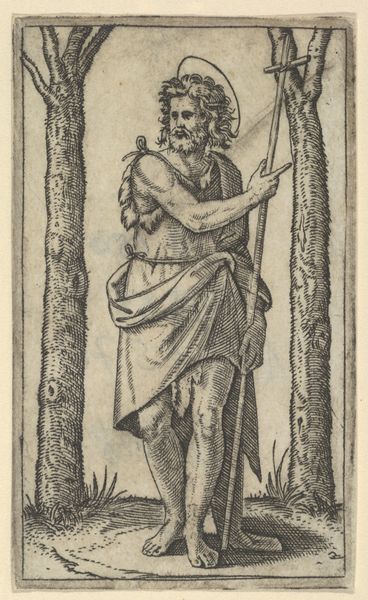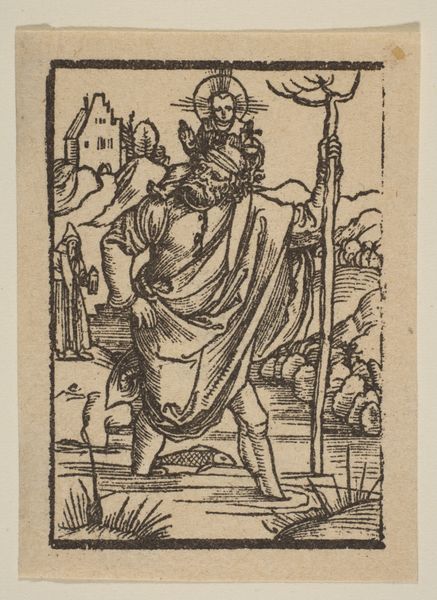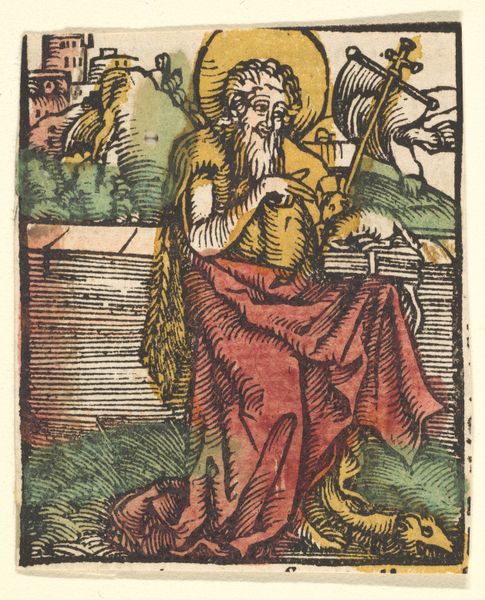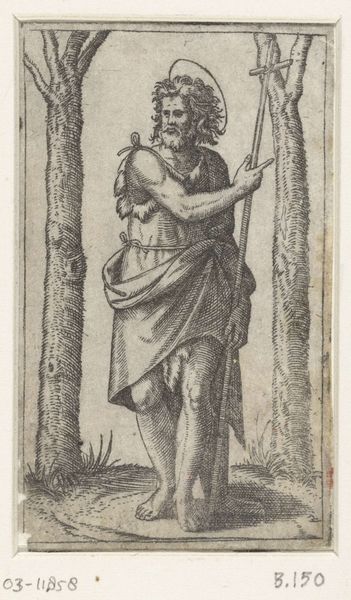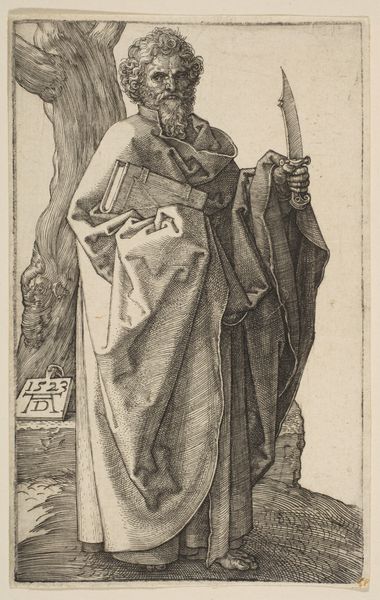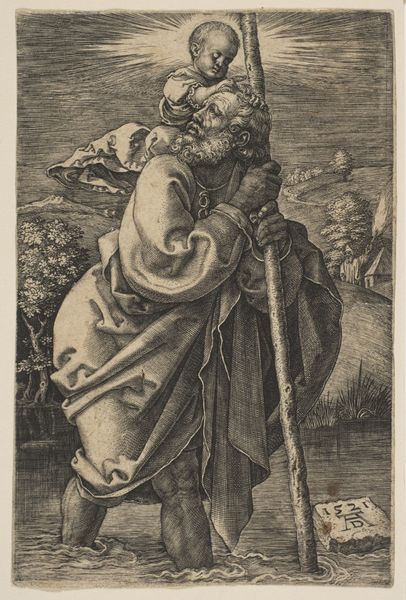
print, woodcut
# print
#
figuration
#
woodcut
#
history-painting
#
northern-renaissance
Dimensions: height 251 mm, width 146 mm
Copyright: Rijks Museum: Open Domain
Curator: Here we have "Mozes," a woodcut, dating back to around 1550, created by an artist known only as Monogrammist AI of the 16th century. Its style evokes the Northern Renaissance, positioning Moses within a historical and social narrative deeply rooted in religious and cultural contexts. Editor: Whoa, okay, immediate thoughts: He's got that faraway look, like he’s seen some stuff. The kind of stuff you can’t unsee! That glow around his head makes him seem not quite real, a little bit... spectral? Curator: Yes, the halo signifies his divine connection and authority. Examining this image, we see the potent blend of religion, identity, and power central to many Renaissance portrayals. The woodcut medium also speaks volumes, democratizing access to religious iconography during the period of the Reformation. Editor: I dig that cloak—dramatic flair for leading folks, right? He is like, "Behold! My awesome cloak and my words!". It’s not all fire and brimstone. It feels kinda somber to me, maybe a little heavy. You can almost feel the weight of his job. Curator: Precisely. His solemn demeanor is important; we must consider the historical anxieties and the religious conflicts brewing when this artwork was produced. Representations like these helped reinforce authority at a time of massive upheaval. Editor: So, he's like, Moses the influencer, but Renaissance style? Imagine him now, he’d have, like, millions of followers and the best shepherdcore aesthetic. He does look ready for a biblical Coachella if that’s a thing! Curator: [laughs] I hadn't quite thought of it that way. Looking closer at Moses’s attire, it does highlight the way artists used clothing to communicate status and influence—consider also that simple staff he wields. Editor: Absolutely. That staff’s giving serious ‘I can part a sea or two, no biggie’ vibes! The print’s not afraid of shadows, you know? The artist gave depth. Even that little backdrop makes me think he did just stop for a minute... and will be moving. Curator: A compelling observation. Looking at "Moses," it forces us to consider the ways visual representations can perpetuate—or challenge—narratives of power and faith across generations. It’s an invitation to examine our own biases when looking at representations of leadership today. Editor: It's funny how art from forever ago can still give us those ‘a-ha’ moments today, isn’t it? This Mozes fella is kind of speaking to our lives—to who and what has shaped us, from different angels. That is how all those masterpieces linger, isn’t it?
Comments
No comments
Be the first to comment and join the conversation on the ultimate creative platform.
